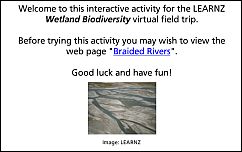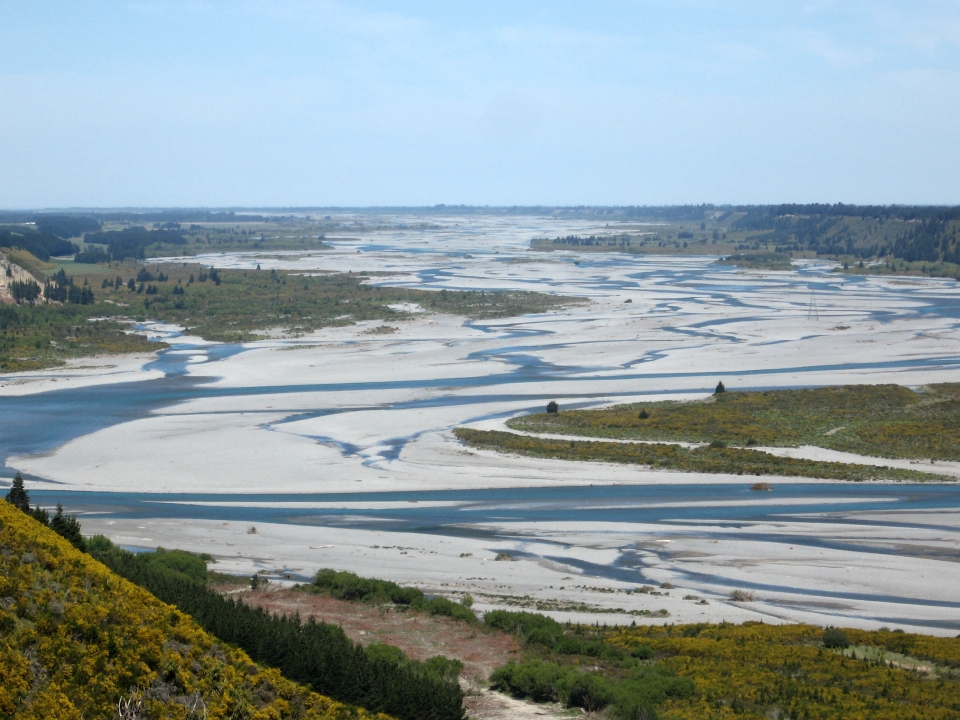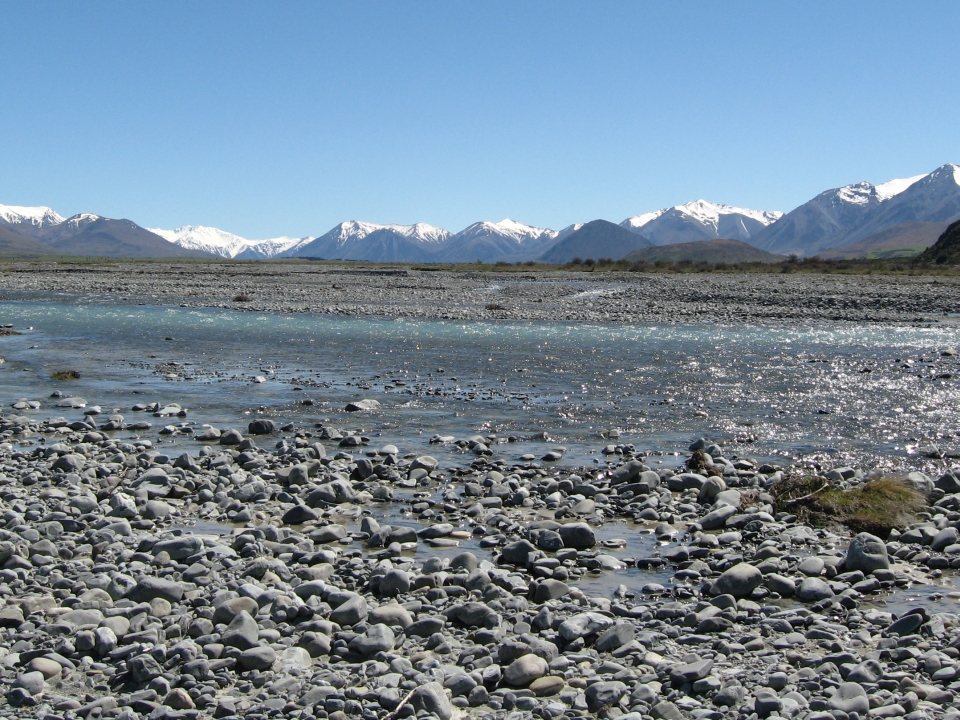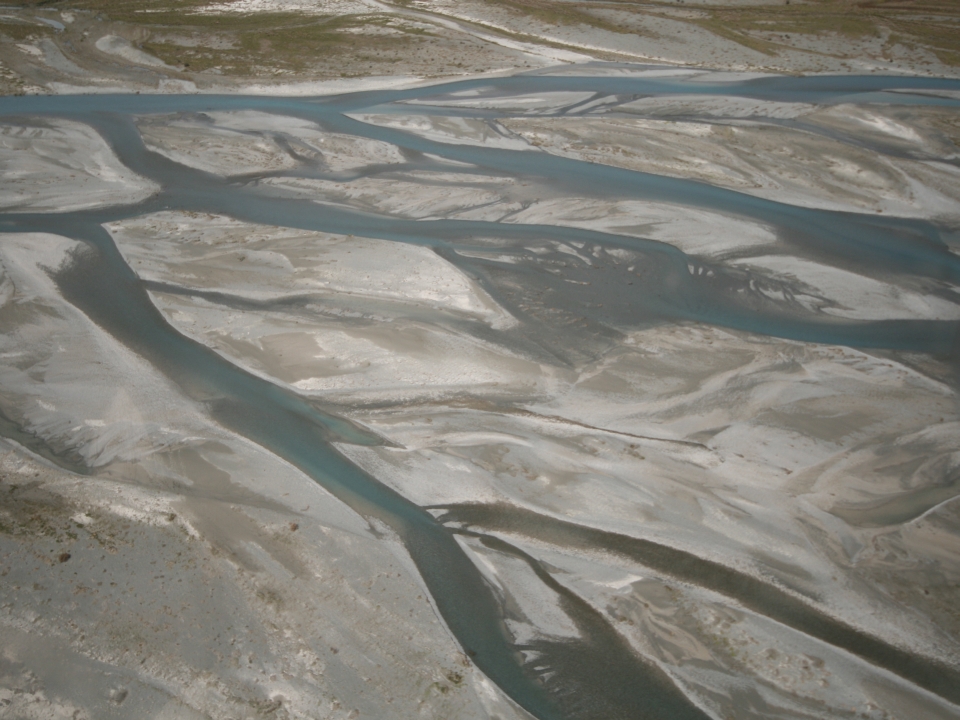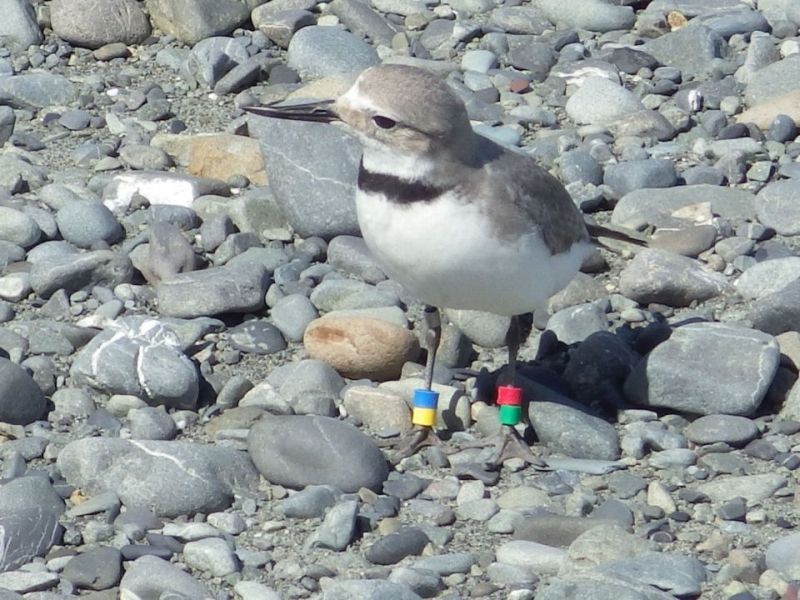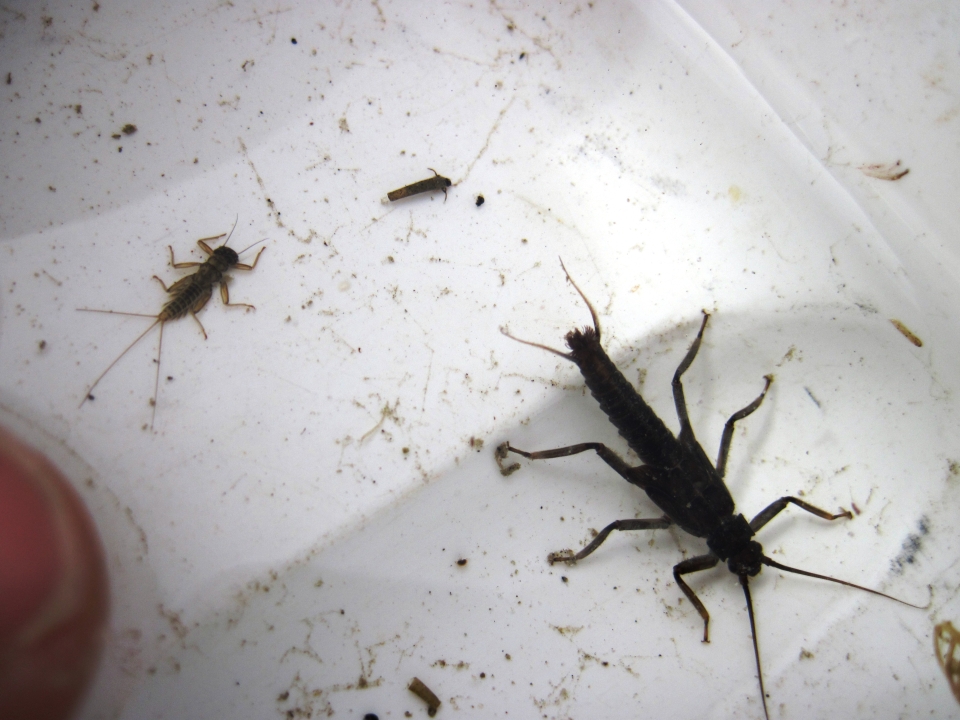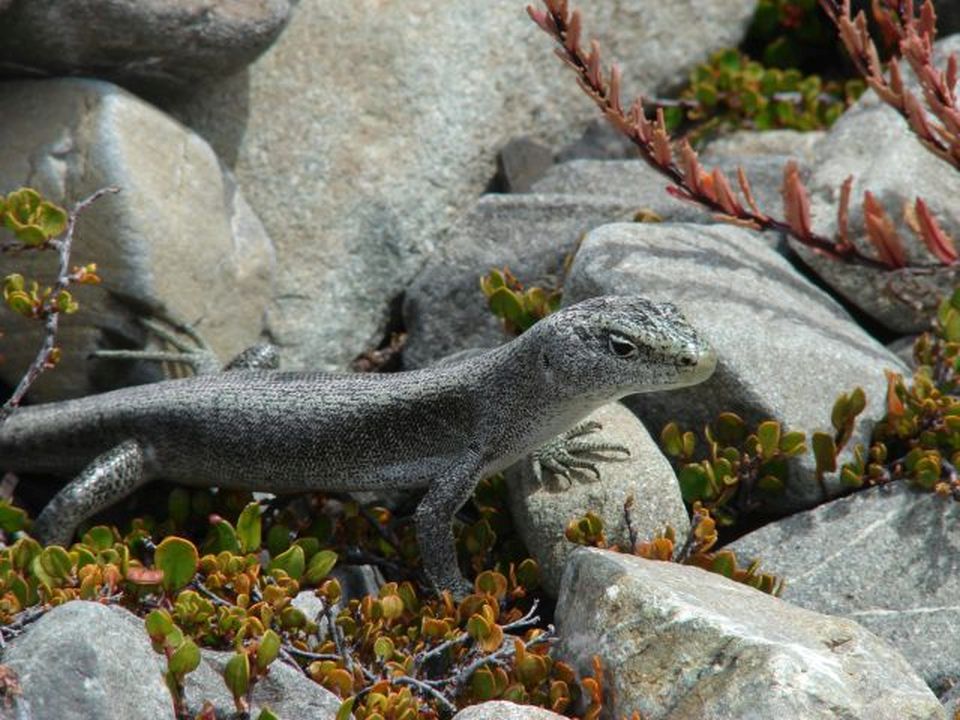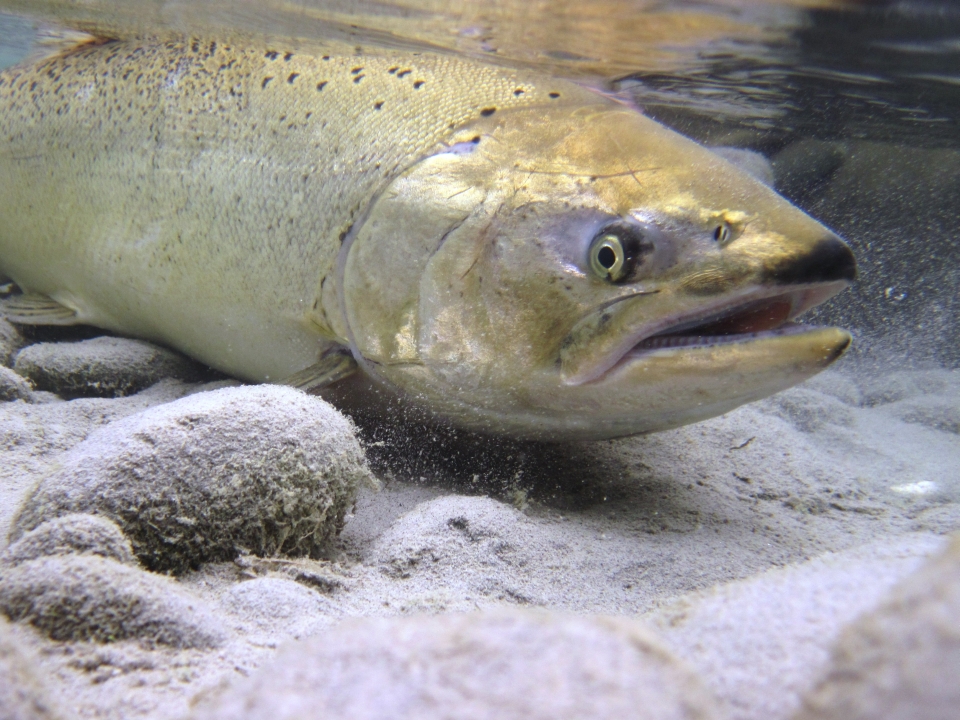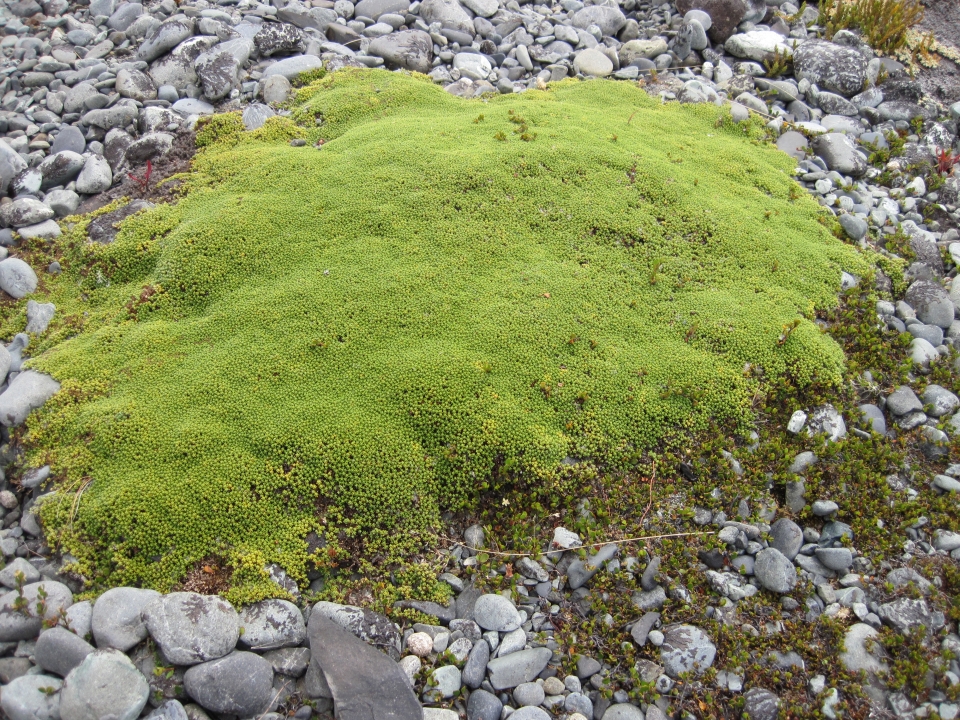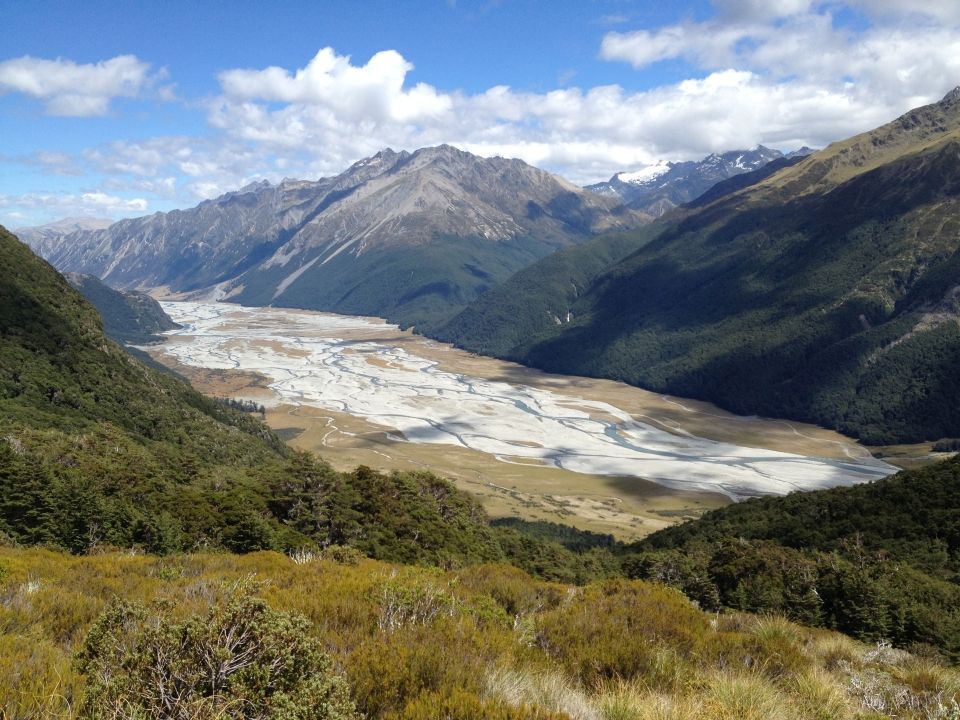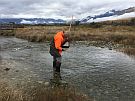Why braided?
The Southern Alps are geologically young. They are constantly being uplifted and eroded. The rocks that fall down the mountainsides end up in rivers. They are carried downstream by floods. When the slope of the river flattens out on the plains, the rocks are deposited. In big floods the rocks and sediments are carried out across the plains toward the coastline.
Braided rivers form when these rocks and sediment build up on the riverbed. In time the build-up becomes so high that the water, seeking the lowest path, begins to flow down a new channel. In this way the streams of a braided river are always moving across their wide bed. Small shingle bars appear and disappear.
River channels shift and water flows vary. This continual change is one of the key features of braided river systems. It is also part of the reason these rivers are such productive ecosystems.
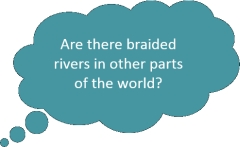
Flora and fauna
Birds
There are many insects in braided rivers which are food for native birds. At least 26 bird species feed and breed on our braided rivers, including:
- Ngutu pare/wrybills
- Tōrea tuawhenua/South Island pied oystercatchers
- Kakī/black stilts
- Tuturiwhatu/banded dotterels.
A few seabird species breed along braided rivers too:
- Tarapiroe/black-fronted tern
- Tara-nui/Caspian tern
- Tara/white-fronted tern
- Kawau/black shag
- Tarāpunga/black-billed gull.
Invertebrates and lizards
Braided rivers and wetlands are home to many aquatic invertebrates including dobsonflies, mayflies, stoneflies, caddisflies, waterboatmen, red coat damselflies, and sandflies. Wingless larvae live beneath rocks. All of these invertebrates are also a food source for fish and birds.
Lizards also make use of river-terrace boulder habitat to live and breed. McCann’s skink/mokomoko, the long-toed skink, scree skink, spotted skink and jewelled gecko are all found in braided rivers.
Fish
Several fish species live in braided rivers and their connected wetlands. Some species are the threatened lowland longjaw galaxias and upland longjaw galaxias. Also the longfin eel/tuna, kōaro, Canterbury galaxias, alpine galaxias, upland bully and common bully.
Braided rivers are also home to popular sport fish such as trout and salmon.
Braided river plants
In braided rivers there are a range of low growing plants adapted to growing amongst shifting gravels, extreme temperatures and limited nutrients. Some special plants include the cushion forming forget-me-not and the rare tiny woodrush. Others include mat daisy and the native daphne/pinatoro.

Important for people
People use braided rivers for recreational purposes such as jet boating, fishing, walking, and swimming. They are also an important tourist attraction.
Braided river-mouths are culturally significant for Ngāi Tahu. The Waitaki River, as the ancestral river of Ngāi Tahu, is of paramount importance. The Waitaki catchment was a key provider of mahinga kai resources and a means of travel by reed raft/mōkihi.
Where are braided rivers?
This map below shows the braided reaches of the 163 braided rivers in New Zealand. The larger rivers from each region have been labelled.
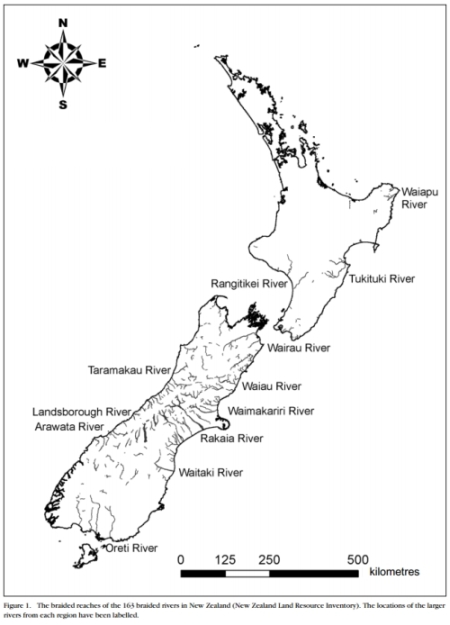
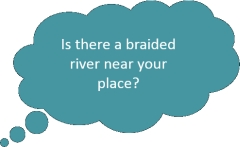
Threats
Braided rivers and the surrounding wetlands are under threat from:
- weeds that stabilise the naturally changing water channels
- predators that prey on native birds, lizards and insects
- introduced fish that compete with native fish species
- the filling of lakes behind hydroelectric dams
- the diversion of water from rivers and wetlands to canals for electricity generation and the removal of water for irrigation
- recreational users who may crush bird nests and chicks with vehicles or scare birds from their nests, leaving eggs and chicks open to predation and weather extremes.
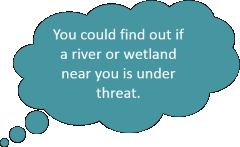
How can you help?
Your actions can help the special and threatened species that live in and around braided rivers.
- Riverbed birds nest between July and February and need special consideration during this time.
- Keep pets away from riverbeds and keep dogs on a leash at all times.
- Keep clear of nesting colonies and watch out for eggs and chicks. They are hard to see and very fragile.
- If you disturb birds accidentally, move on quickly so that the birds can return to their nests.
- Avoid driving vehicles on riverbeds. Park on the bank and walk to your destination.
- The speed limit for boats is 5 knots within 200 metres of the bank. Jetboats disturb birds and wash away nests.
- Above all, respect braided rivers and the plants and animals that need your consideration to survive.
- Ready for a quiz?
